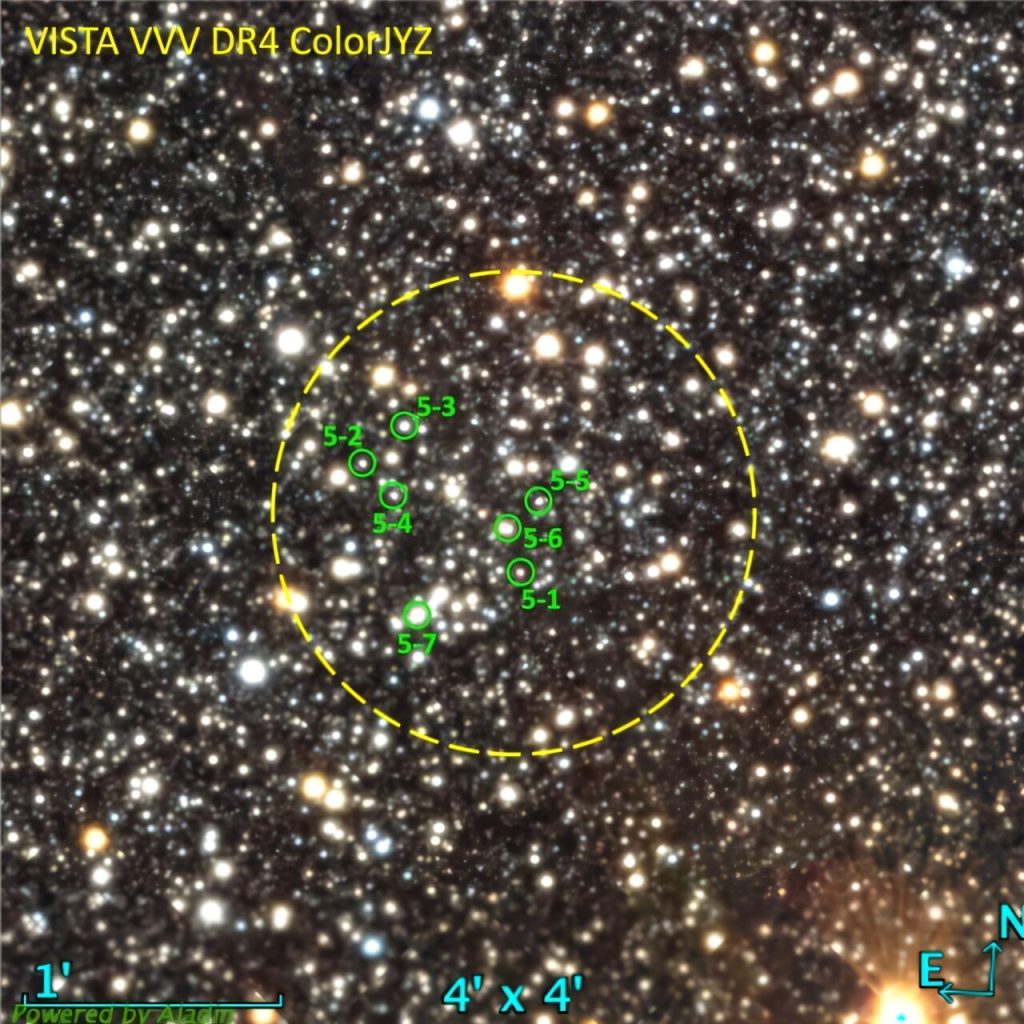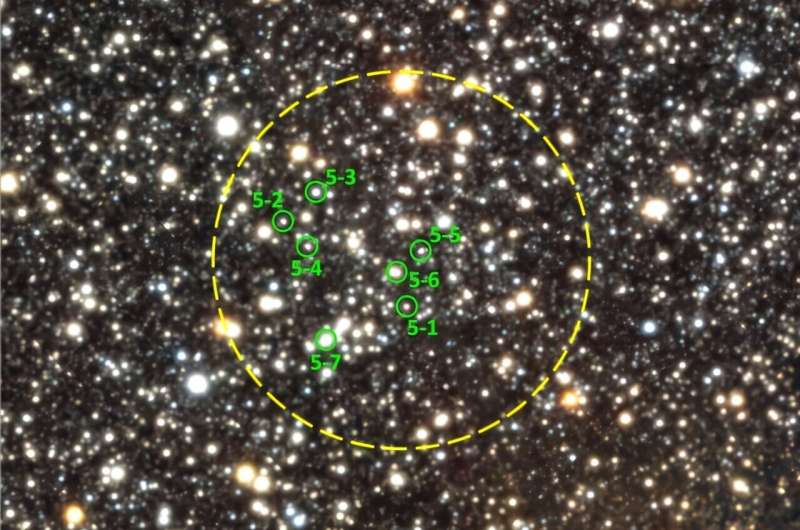
Globular cluster Gran 5 hosts two stellar populations, study finds (Image Credit: Phys.org)

Using the Gemini-South telescope, astronomers have performed high-resolution near-infrared spectroscopy of stars in a Galactic globular cluster known as Gran 5. They found that this cluster harbors two stellar populations with different metallicities. The finding was reported in a paper published October 28 on the pre-print server arXiv.
Globular clusters (GCs) are collections of tightly bound stars orbiting galaxies. Astronomers perceive them as natural laboratories enabling studies on the evolution of stars and galaxies. In particular, globular clusters could help researchers to better understand the formation history and evolution of early-type galaxies, as the origin of GCs seems to be closely linked to periods of intense star formation.
Gran 5 is a newly discovered low-mass GC located some 14,600 light years away, very close to the Galactic center. The cluster has a mass of about 22,900 solar masses and is assumed to be an accreted object associated with the Gaia–Enceladus–Sausage kinematic structure in the Milky Way’s halo.
Aiming to shed more light on stellar populations of Gran 5 and to unveil their detailed chemical properties, a team of astronomers led by Dongwook Lim of the Yonsei University in Seoul, South Korea, investigated seven stars of this cluster with the Immersion Grating Infrared Spectrometer (IGRINS).
“We performed high-resolution near-infrared spectroscopy on seven stars in the field of Gran 5 using IGRINS on the Gemini-South telescope,” the researchers wrote in the paper.
Based on the spectroscopy of the seven stars, Lim’s team identified six stars as cluster members, while one star was excluded due to its significantly different radial velocity. These six stars have heliocentric radial velocities of about -60 km/s and low metallicities at a level of -0.65 dex, confirming that Gran 5 is indeed a globular cluster.
However, the study found that these investigated stars can be divided into two groups with different metallicities, with mean values of −0.76 dex and −0.55 dex for each group. Given that these two groups do not show any tendency towards heliocentric radial velocities or atmospheric parameters, the astronomers assume that Gran 5 consists of two stellar populations with different metallicities.
The authors of the paper note that their study marks the first detection of two stellar populations with different metallicities in a low-mass globular cluster. They add that the derived chemo-dynamical properties of Gran 5 suggest that it is not associated with the Gaia–Enceladus–Sausage structure but belongs to the Galactic bulge or disk.
Summing up the results, the researchers conclude that the observed metallicity variation of Gran 5 may have arisen from different processes, or that it may have lost a substantial amount of mass during its evolution.
More information:
Dongwook Lim et al, Two stellar populations with different metallicities in the low-mass globular cluster Gran 5, arXiv (2024). DOI: 10.48550/arxiv.2410.21578
Journal information:
arXiv
© 2024 Science X Network
Globular cluster Gran 5 hosts two stellar populations, study finds (2024, November 5)
retrieved 5 November 2024
from https://phys.org/news/2024-11-globular-cluster-gran-hosts-stellar.html
part may be reproduced without the written permission. The content is provided for information purposes only.








